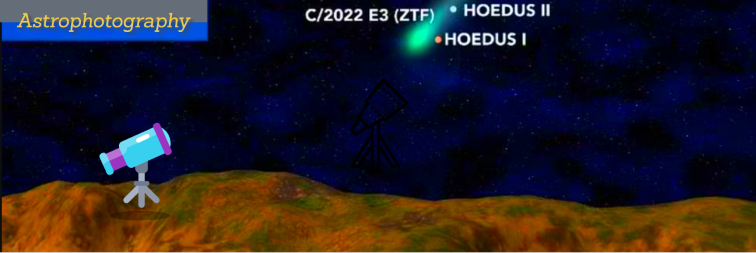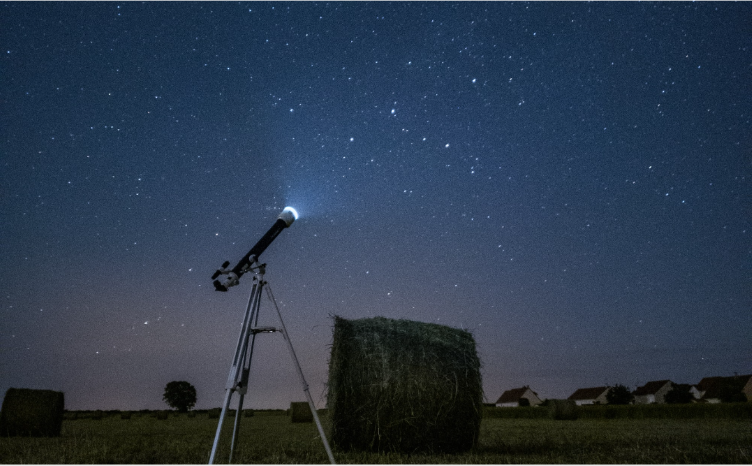Meet and photograph the green comet – Hello C/2022 E3!

50,000 years ago comet C/2022 E3 or simply E3, came to the Sun, circled it and then returned to the dark depths of the Solar System – until now. Now it is here again, the comet has circled the Sun again and in these days will pass at the smallest distance from the Earth.
Its passage is a good opportunity for sky watchers and especially for astrophotographers!
The comet will be, according to estimates, the brightest comet we will be able to see this year, accessible even to observation with the naked eye. The comet won’t leave that quickly either. It should also be said that the Moon gets in the way of our observation, and we should wait for it to set and then hurry up to watch until it dawns.
E3 is high in the sky and rides through the circumpolar constellation Camelopardalis, i.e. the Giraffe.
Conditions
Needless to say, there are certain conditions which are necessary for this observation: a clear sky, the absence of the Moon and certainly no street lights!
Since the comet is now on the verge of being accessible to the naked eye, it is best to look for it with binoculars, and only if you succeed in that, remember the star pattern in its surroundings and try to see the comet without optical aids.

You also need to know this: the comet is not a clear, bright spot, but a diffuse freckle. You will probably see it as a nebulous spot and not a very noticeable one at that.
Ten days later it will be easier to find E3 as it will be passing by a fairly clear reddish dot. It is Mars that will give this heavenly landscape a special charm.
How to photograph the E3 comet?
With the stated conditions, do the following:
- Set up a tripod for the camera (stable and solid),
- Hang the camera with a telephoto lens on it,
- Open the maximum aperture, set a high ISO, say 1600 or 3200.
After all, try different combinations until you get one that seems perfect to you! And keep in mind that the comet will actually become less visible with time passing that is until the end of April. This means that the farther away E3 is from us, its brightness will diminish and soon it will only be possible to see it with a telescope.
The comet passed the Sun on January 12 at a distance of 166 million kilometers, and these days it will move by the Earth at a distance of 42 million kilometers.
Just as a reminder – the Moon is on average 384,400 kilometers away from us. So, those 42 million are really far!
Extra tip
The comet E3 is green. Scientists say it is due to the presence of diatomic carbon around the comet’s nucleus.
What will happen next with the comet?
Well, as far as science and data tell us E3 will direct towards the periphery of the solar system and either stop in the Ort cloud and return to the Sun again, but only after several million years or it will leave the solar system forever.
Want to read more about the universe? Visit our blog!

